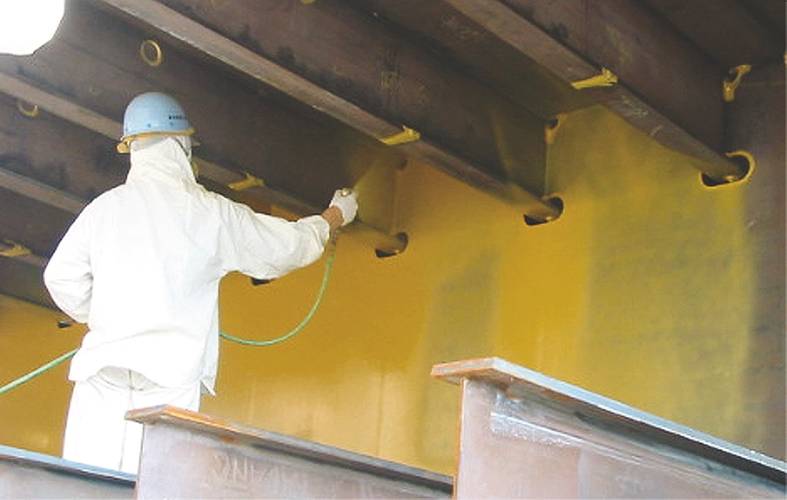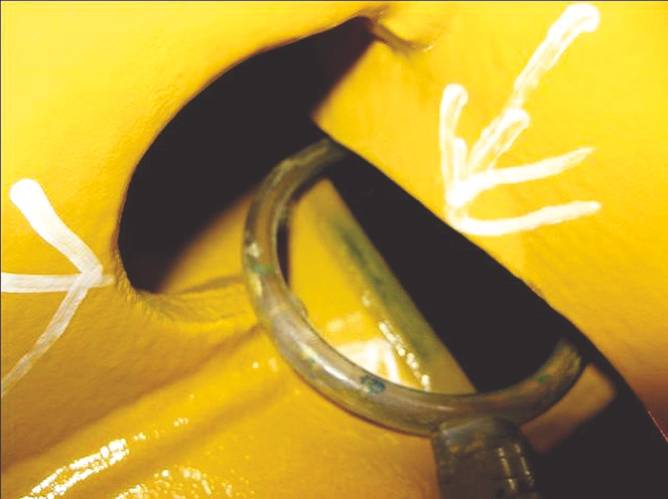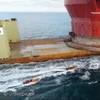Marine Coatings: Self-Indicating Tech Provides Anti-corrosion Certainty
In the months and years before the Covid-19 pandemic, the world was getting used to the idea of reducing its reliance on oil with more focus on liquefied natural gas (LNG). Consequently, shipyards and shipowners responded to the shift by building new or recommissioning existing LNG carriers and storage vessels.
However, reducing dependence on Russian oil and gas from much of the world market – where it was the second biggest exporter of the product – has instigated a greater scramble for alternative suppliers and a corresponding increase in demand for ships able to transport and store gas from all corners of the world.
Indeed, the decision by Germany to cancel the Nord Stream 2 gas pipeline from Russia to mainland western Europe – resulting in an EU-US deal at the end of March for the latter to start supplying billions of cubic metres of additional LNG capacity – is likely to exacerbate demand.
“We were already seeing increased demand for LNGC to FSRU conversions before the recent drastic disruption in oil and gas markets, but demand is now expected to exceed those initial expectations,” says Niko Yamanoue, Director, Nippon Paint Marine (Europe).
“We are seeing increased interest in countries considering storage and regas units to supplement and strengthen existing shore-based infrastructure. But irrespective of whether owners build new, recommission tonnage laid up during the offshore downturn or convert existing LNG carriers into FSRUs or FSUs, the performance of the protective coatings specified will be key.”
Certainly, the primary consideration for any conversion project is the anti-corrosion coatings used on the vessel’s hull, and ballast, fuel and potable water tanks. But if the correct film thickness is not achieved during application the vessel could be susceptible to corrosion and structural failure.
It was for the internal carbon steel tanks and pipework of offshore vessels and installations that Nippon Paint Marine’s unique self-indicating NOA60HS coating was certified in 2020 by the Norwegian Technology Standards Institution as meeting the requirements of the NORSOK M-501 standard.
“The NORSOK standards were developed in 1994 by Norway’s petroleum industry to ensure protective coatings were suitable in offshore oil and gas environments. The addition of NOA60HS to the NORSOK M-501 approved product range marked a significant development in the structural safety of offshore vessels and installations, such as FSOs, FSRUs and FPSOs,” says Yamanoue.
“As floating oil and gas storage facilities are often built to NORSOK standard, we need to offer certified coatings products. These assets are designed with much longer service intervals than conventional vessels, and an effective and reliable long-life anti-corrosive coating is crucial to their safe operation. NOA60HS eliminates the risk of anti-corrosion coatings applied with low film thickness, a contributory factor in corrosion influenced structural failure.”
Yamanoue furthers that correctly applied coatings, especially to tank edges and corners, improves the structural integrity of internal spaces, providing greater protection. With NOA’s unique self-indicating technology, if the coating appears transparent, then film thickness is incorrect. When it is opaque, the specified film thickness has been achieved.
The special pigmentation used in the NOA (Nippon Optimised and Advanced) range is carefully adjusted to the correct dry film thickness of the system so applicators and inspectors can see immediately if an area meets the specification or needs to be corrected.
Applied in two coats at 160μm per coat, NOA 60HS meets all PSPC acceptance criteria, is easy to clean and has low emissions of volatile organic compounds.
 Photo courtesy Nippon Paint Marine
Photo courtesy Nippon Paint Marine
There is also a cost-efficiency element to a NOA application since correct thickness of the film has significant impact on the amount of time a vessel can remain on station and out of drydock, particularly important for static vessels.
A number of LNG carriers are currently operating with NOA 60HS in their ballast water tanks, with Nippon Paint Marine anticipating a rush of new orders as demand for gas ships and conversions heats up.
The same can be said of NOA10F and NOA10M, which the Japanese coatings company developed to protect the outer hull areas above and below the waterline. For newbuilding and maintenance projects respectively, the anti-corrosion paint incorporates the same self-indicating technology as all the coatings in the NOA range.
With an eye to the future use of alternative fuels, Nippon Paint Marine has also developed a NOA system to add greater protection to fuel tanks. NOA PC 700, a phenolic/novolac-based epoxy also approved by NORSOK, is resistant to a wide range of chemicals, solvents and petroleum products, including those containing xylenes, methyl ethyl ketone, methanol, caustic soda and LSA fuel oil.
Hiro Yamashita, Technical Manager, Nippon Paint Marine (Europe), says: “The addition of NOA PC 700 to our established NOA range significantly protects inner tanks from corrosion while preventing contamination. As with all NOA coatings, application is self-indicating which enables the applicator to visually confirm the correct (wet/dry film thickness has been achieved during the application process.”
While a NOA application improves coating quality and helps to reduce manhours and costs, Yamashita emphasises the importance of NOA in maintaining structural integrity.
“Correct film thickness is crucial in mitigating against corrosion risk to maintain ship structural strength,” Yamashita says. “This is becoming more and more apparent with the increase in areas requiring coating and the reduction in the availability of skilled applicators. By improving corrosion resistance through more accurate coating application, offshore units are less prone to rusting early.”
While various NOA products have been developed according to the anti-corrosive requirements of different parts of the ship or offshore structure, all the coatings are based on pigments that have various opacities depending on film thickness.
Since the first NOA coating was launched in 1998, some 1770 newbuilds have benefitted from NOA60 HS. NOA10M, however, has been used to repair and maintain the hulls of more than 14,000 ships of all types.


















